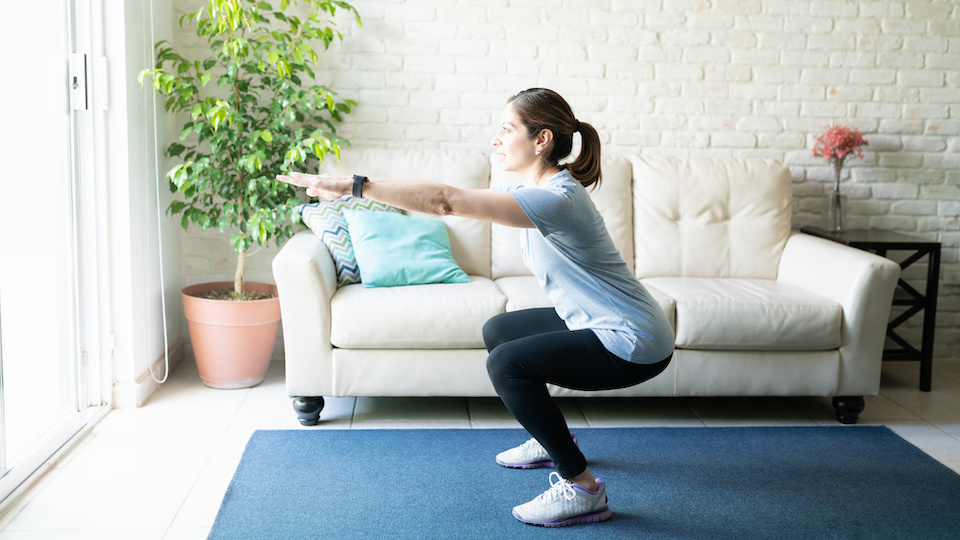If you’ve ever crossed your legs before sneezing…you know what it’s like. Those little leaks that happen unexpectedly throughout the day can be inconvenient, uncomfortable, and downright embarrassing.
But everyday bladder leakage is not a normal part of aging, despite what anyone might tell you. There are many ways to manage and reverse this condition so you can get your life back.
Physical therapy is one of the best ways to prevent two common types of incontinence:
- Stress incontinence, the type that happens when you cough, sneeze or laugh
- Urge incontinence, the type where it’s hard to make it to the bathroom quick enough before a leak occurs.
The key to reconditioning your ability to “hold it” lies with the pelvic floor
What is the pelvic floor?
The pelvic floor is a system of muscles, ligaments, tissue, and nerves arranged at the bottom of the pelvis that forms a hammock supporting your bladder and uterus. As women, our pelvic floor, muscles, and organs go through a lot, especially during pregnancy, childbirth, and menopause. For example, some women have bladder control problems after they stop having periods. Researchers think having low levels of the hormone estrogen after menopause may weaken the urethra. The urethra helps keep urine in the bladder until you are ready to urinate.
When the muscles that support the urinary tract are weak, they must work harder to hold urine until you are ready to go. This extra stress or pressure on the bladder and urethra can cause urinary incontinence or leakage. Strengthening your pelvic floor muscles can greatly increase your ability to avoid little leaks throughout the day, giving you back your confidence and freedom.
How to strengthen your pelvic floor & prevent bladder leaks
Whether you experience bladder leaks, prolapse, any other form of pelvic floor dysfunction, or just want to maximize your fitness routine; the good news is that pelvic floor exercises are actually pretty simple. These exercises can all be done in your living room with little or no equipment.
Resistance band row
This exercise prevents rounded, forward posture, which can throw off your body’s internal balance and shift weight unequally across your pelvic floor muscles.
Step onto the middle of a resistance band with both feet, so your ankles are directly underneath your hips. Lean forward, bending at your hips with elbows pointed back, and begin to row. Your head should look forward to ensure proper spinal alignment. Exhale as you pull up and back, and inhale as you bring your arms back down. Try doing three sets of 12 reps regularly.
Squats
Squats can be great for creating pelvic floor strength. They can develop strong glutes and hamstrings, key pieces that support long-term pelvic floor health.
To do this exercise, stand with your feet hip-width apart, and engage your core muscles and pelvic floor. Keeping your back straight and chest up, lower your body into a squat, keeping your knees in line with your toes. Rise back up to standing position and repeat. Try to complete 10 to 20 reps.
Hip bridge
Hip bridges are good exercises to tighten your buttocks, and they also work to strengthen your pelvic floor muscles.
Lie on the floor, bend your knees, and place your feet firmly on the floor. Tighten your pelvic floor muscles and push your hips up off the floor, keeping your back straight. Hold this position for 10 seconds while continuing to breathe. Release, then repeat for 6 to 10 reps.
Foam roller crawl
Foam rolling your quad muscles releases tension in your thighs and improves hip mobility. It’s a great way to release muscle tension in your body and improve hip mobility. Your deep hip muscles are connected to – you guessed it – your pelvic floor muscles, so anything you can do to reduce stress, relieve tension, and improve your body’s shock absorption will help regulate the load on your pelvic floor throughout the day.
Place your forearms on the floor, and position a foam roller beneath the middle of your thighs. As you crawl forward on your forearms with your core braced, allow the roller to travel down towards your knees. Then crawl backward with your forearms as the roller travels up your legs towards the tops of your thighs. Remember to breathe throughout!
Bird-dog
An exercise in balance and stability, bird-dog, is a full-body move that makes you engage many muscles at once, including the pelvic floor.
Start on all fours, making sure to keep your wrists aligned under your shoulders, and your knees under your hips. Be sure to keep your head facing down, so your spine is in alignment. Engage your core, then simultaneously raise your right arm and left leg until they are straight. Stretch your limbs out long and hold them parallel to the floor. Hold this position for 5 seconds, then lower your arm and leg back to starting position. Perform the same movement on the opposite side, and alternate for at least five reps on each side.
Other ways to stop leaking
Urinary incontinence isn’t always preventable. However, to help decrease your risk, try these lifestyle changes:
- Maintain a healthy weight – research has found that overweight and obese women who lose weight report fewer episodes of bladder leakage.
- Avoid bladder irritants, such as caffeine, alcohol, soda, chocolate, spicy foods, and acidic foods such as citrus and tomatoes.
- Eat more fiber, which can prevent constipation – a cause of urinary incontinence.
- Don’t smoke, or seek help to quit smoking.
Continue doing your pelvic floor exercises and lifestyle interventions for 4 to 6 weeks, and you’ll be well on your way to enjoying a leak-free lifestyle.
-The UpWellness Team









